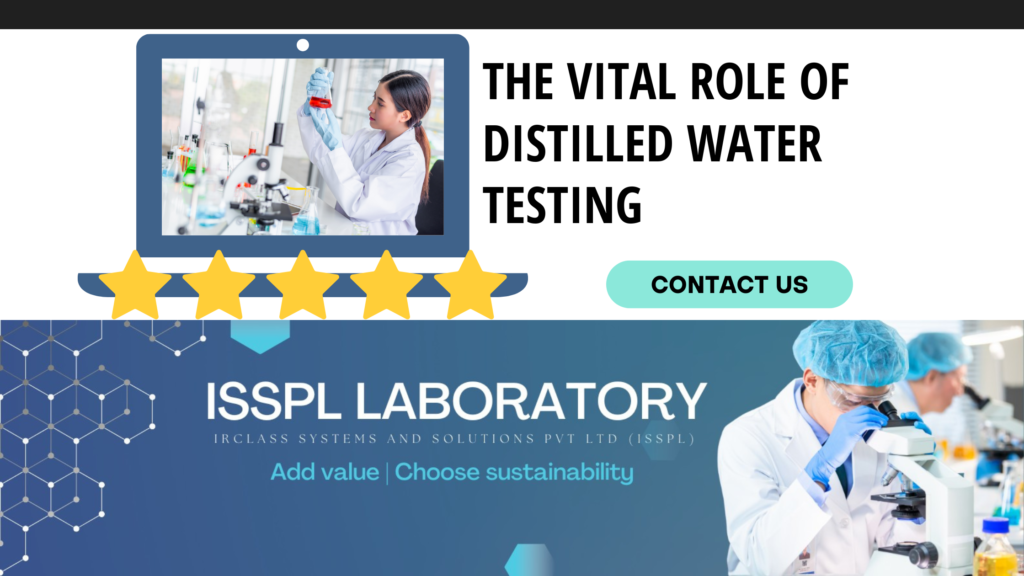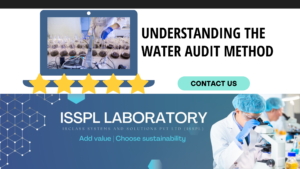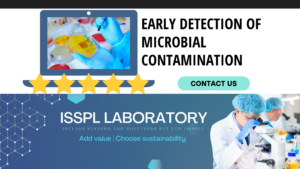An Overview by Team ISSPL - Analytical Testing Laboratory in India
ToggleWater distillation is an integral testing program in the laboratory. Distilled water testing ensures optimal purity and quality of the water. It exhibits the usability and purity of the water being used in critical experiments and testing procedures.
Dynamic contaminants like chemicals, microbes, heavy metals, sediment, etc., need the best quality management solution. The testing mechanisms prevent the chances of using impure and unsuitable distilled water for different purposes.
Essentiality of pure and lab-tested water
There is more than one technique for water testing. Obtaining pure and laboratory-tested distilled water is convenient if you have the best lab to guide you with the testing programs. Distilled water is produced in a complex way. It contains critical chemical agents, and the impure contaminants can impact usability. The testing measures help remove impurities and unwanted minerals.
Distilled water testing – Know the testing techniques
| Conductivity Testing | Conductivity testing of the distilled water helps measure the electrical conductivity. Pure water exhibits low conductivity because it has minimal ions and dissolved substances. The test results review the level and reflect the impurity level. Impurities may be minerals or salts that may increase the conductivity of water. The labs use conductivity meters or electrodes to check the impurity levels. |
| pH Testing | pH testing is a significant testing method essential to determine the purity of distilled water. The pH level exhibits the acidity or alkalinity of the distilled water solution. The distilled water can have a neutral pH (value=7). The standard range helps indicate the presence of impurities with the lab testing methods. |
| Total Dissolved Solids (TDS) Testing | Total Dissolved Solids or TDS testing is an excellent testing solution to evaluate the concentration of dissolved substances in the distilled water. It provides an overview of the impurities in the water. The impurities may be minerals, salts, metals, and dissolved solids. The high TDS value signifies impurity in the water, assisting in decision-making for critical operations and applications. |
| Microbiological Testing | Microbiological testing helps evaluate the presence of microorganisms and bacteria in distilled water. Distilled water must not contain microbial contamination. Microbiological testing is a comprehensive process of laboratory analysis. Different labs use culture-based methods and molecular methods like polymerase chain reaction (PCR). All these help identify and quantify microorganisms in the distilled water. |
Decode the testing purpose
The testing indicators for distilled water are an excellent way to review the composition of water. The testing labs use a conductivity meter to measure the conductivity and salinity of the water. A pH meter can review the pH of the water, determining the behavior of other chemical constituents in the distilled water. Apart from using the testing indicators, modern labs use portable digital instruments to review the hidden constituents. These instruments are complex and expensive, ensuring optimal testing accuracy.
Key takeaways – Ensure purity with quality testing
Simply put, distilled water has a crucial part in multiple applications and environmental test chambers. Hence, it is paramount to ensure accurate and reliable testing results.
It is consequential to note the purity of the water to denote the validity of test outcomes. All these make the testing measures paramount. With a reliable laboratory service solution from IRCLASS Systems and Solutions Pvt Ltd (ISSPL), ease the evaluating requirements to the next level.







